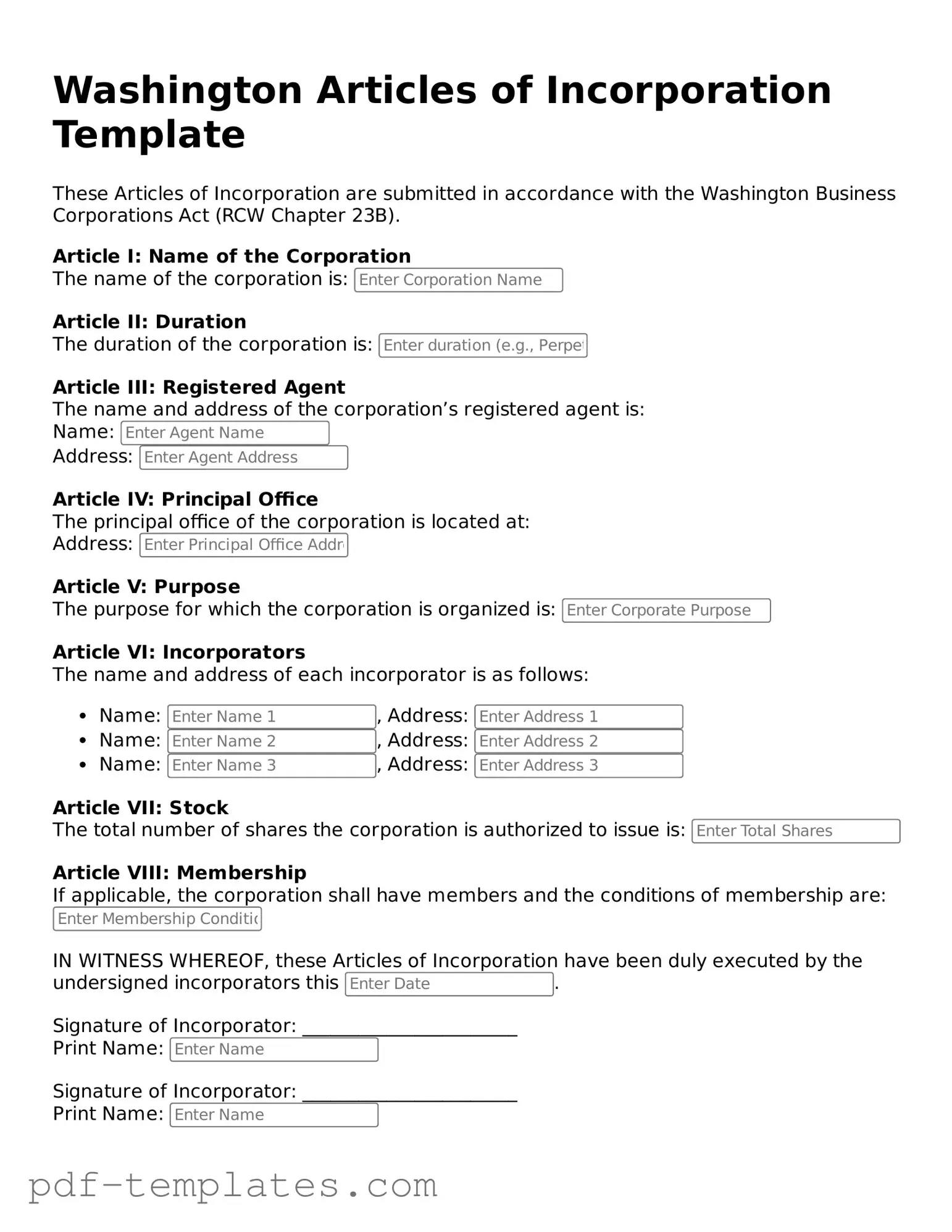The Articles of Incorporation is similar to the Certificate of Formation in several states. Both documents serve to officially create a corporation. The Certificate of Formation outlines basic information about the business, such as its name, purpose, and registered agent. This document is often required to be filed with the state’s Secretary of State, just like the Articles of Incorporation. Both documents establish the legal existence of a corporation and provide essential details that inform the public about the company’s structure.
The Bylaws of a corporation are also closely related to the Articles of Incorporation. While the Articles provide foundational information about the corporation, the Bylaws detail the internal rules and procedures for managing the company. They outline how meetings are conducted, how officers are elected, and how decisions are made. Together, these documents ensure that the corporation operates smoothly and in accordance with its stated purpose.
A Certificate of Good Standing can be compared to the Articles of Incorporation as well. This certificate verifies that a corporation is properly registered and compliant with state regulations. While the Articles of Incorporation are the initial filing that establishes a corporation, the Certificate of Good Standing is often required for business transactions, such as opening bank accounts or applying for loans. It confirms that the corporation is active and in good standing with the state.
The Operating Agreement is another document that shares similarities with the Articles of Incorporation, particularly for Limited Liability Companies (LLCs). While the Articles of Incorporation establish the LLC’s existence, the Operating Agreement outlines how the LLC will be managed and how profits and losses will be distributed. This agreement is crucial for clarifying the roles of members and ensuring that the LLC operates according to its members' wishes.
The Partnership Agreement is akin to the Articles of Incorporation in that it formalizes the structure of a business partnership. This document outlines the roles, responsibilities, and profit-sharing arrangements among partners. Like the Articles, the Partnership Agreement is essential for legal recognition and helps prevent disputes by clearly defining each partner’s contributions and obligations.
Similarly, the Business License is a document that, while different in purpose, is essential for legal operation. The Articles of Incorporation establish a corporation, while a Business License permits that corporation to operate legally within a specific jurisdiction. Both documents are necessary for compliance with local laws and regulations, ensuring that businesses are recognized by the state and local authorities.
The Shareholder Agreement is another document that complements the Articles of Incorporation. It outlines the rights and responsibilities of shareholders within a corporation. This agreement can address issues such as share transfers, voting rights, and dispute resolution. While the Articles of Incorporation provide the framework for the corporation, the Shareholder Agreement offers more detailed governance regarding the relationships among shareholders.
Finally, the Annual Report is similar to the Articles of Incorporation in that it is a required document for maintaining a corporation’s status. The Articles of Incorporation establish the corporation, while the Annual Report provides updates on its activities, financial status, and any changes in management. Filing the Annual Report keeps the corporation in good standing with the state and ensures that public records are accurate and up to date.
